Indonesian batik it’s a vibrant expression of culture, history, and artistry. Recognized by UNESCO as a Masterpiece of Oral and Intangible Heritage, batik tells stories through its intricate patterns and vivid colors. Each design carries deep meaning, often reflecting traditions, nature, or spiritual beliefs unique to Indonesia’s diverse regions. From the meticulous hand-drawn canting to the modern innovations in printing, batik continues to captivate hearts worldwide. Today, it’s not only a symbol of national pride but also a global fashion statement. By exploring Indonesian batik, you’re embracing a timeless craft that bridges the past and the present.
Why Indonesian Batik Stands Out Globally
1. A Symbol of Identity and Cultural Storytelling
Indonesian batik it’s a powerful symbol of identity and cultural expression. Each pattern carries deep meaning, telling stories rooted in Indonesian traditions, local beliefs, and historical values. Whether it’s the intricate motifs of Java or the symbolic designs from Bali and Sumatra, batik reflects Indonesia’s rich diversity. These patterns often represent social status, regional heritage, or even personal milestones like weddings or royal lineage. Because of this storytelling element, batik has become more than fashion; it’s a wearable form of art that connects people to their roots. Clearly, batik is not only beautiful but also full of soul.
2. Recognized by UNESCO as a Masterpiece of Heritage
One key reason Indonesian batik shines on the global stage is its recognition by UNESCO as a Masterpiece of Oral and Intangible Heritage of Humanity since 2009. This prestigious title highlights the craftsmanship and cultural depth behind every batik piece. It also helps protect traditional batik-making techniques and encourages younger generations to keep the craft alive. Thanks to this global acknowledgment, batik has gained more respect and demand beyond Indonesia. Now, it’s seen as more than a local textile—it’s a respected cultural treasure with international value. As a result, buyers worldwide now view batik as an authentic and meaningful product worth investing in.
3. Batik as a Fashion Statement in Modern Lifestyles
Beyond tradition, Indonesian batik has made a strong impact in modern fashion, making waves among designers and trendsetters. Today, you’ll find batik in contemporary wardrobes—from tailored suits and elegant dresses to casual wear and accessories. Its versatility allows it to blend seamlessly into both formal and everyday looks. What makes batik truly stand out is how it adapts without losing its authenticity. International fashion houses and local designers alike are embracing batik, using it to create fresh, stylish collections. By bridging the past and present, batik continues to evolve while staying true to its origins—proving that heritage can be both timeless and trendy at the same time.
Also Read : Potential Export Batik from Indonesia to United States
Top 15 Popular Indonesian Batik Motifs the World Can’t Get Enough Of
1. Parang — Indonesian Batik which Symbolizes a Symbol of Strength and Leadership
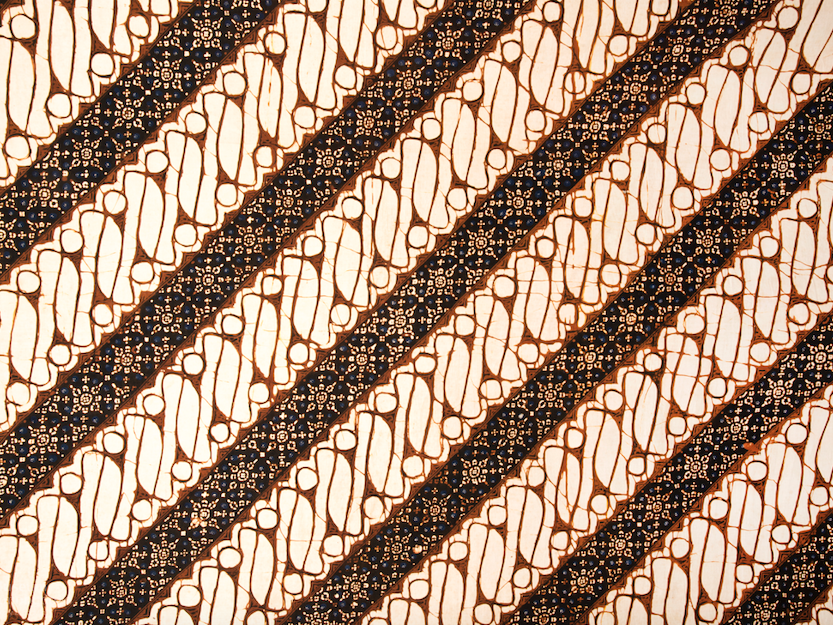
Batik Parang is one of Indonesia’s most iconic and powerful motifs. Traditionally worn by royalty, this design features diagonal wave-like lines that symbolize strength, resilience, and leadership. Each curve flows with purpose, representing continuous effort and determination in life. Artisans usually craft Parang in earthy tones like brown and dark blue, which reflect harmony and wisdom. Today, people embrace Parang not only for its deep meaning but also for its timeless beauty. Whether on modern fashion or traditional wear, this pattern always makes a bold, elegant statement.
2. Kawung — Representing Balance and Purity

Batik Kawung is one of Indonesia’s oldest and most elegant batik motifs, known for its simple yet refined geometric patterns. Inspired by the cross-section of the aren palm fruit (Arenga pinnata), this design features symmetrical circles that symbolize balance, harmony, and purity. Traditionally worn by royal families in Java, Batik Kawung carries deep cultural meaning and reflects a sense of timeless sophistication. Today, it remains a favorite among fashion lovers who appreciate heritage and minimalistic beauty. Whether used in formal wear or modern streetwear, Batik Kawung adapts effortlessly to contemporary trends while preserving its traditional roots. Clearly, this motif is more than just a pattern—it’s a celebration of Indonesian history and craftsmanship at its finest.
3. Mega Mendung — A Cloud Motif of Patience and Calmness

Batik Mega Mendung, a traditional Indonesian batik motif from Cirebon, West Java, is a stunning representation of nature and culture. This unique design features cloud-like patterns that symbolize the connection between humans and the natural world. Unlike other batik styles, Mega Mendung uses soft yet bold colors and flowing lines to create a senseatmospheric feel that stands out in every piece. Local artisans craft it with deep meaning, often reflecting values like humility, harmony, and spiritual growth. Today, this batik style continues to inspire modern fashion while preserving its cultural roots.
4. Truntum — Indonesian Batik with A Story of Love, Loyalty, and New Beginnings

Batik Truntum carries a heartfelt story of love, loyalty, and guidance. Created by a queen to win back her husband’s affection, this motif features tiny star-like patterns that symbolize hope blooming from the heart. Each dot reflects care, patience, and unwavering devotion. That’s why many couples wear Truntum during weddings, as a sign of eternal love and shared growth. Moreover, this pattern often appears in soft, calming colors, making it both graceful and meaningful.
5. Sido Mukti — A Traditional Blessing for Prosperity
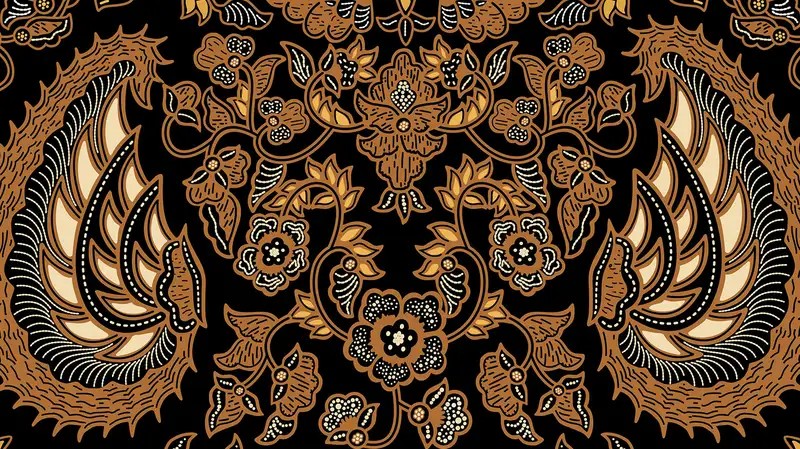
Batik Sidomukti is one of Indonesia’s most meaningful batik motifs, deeply rooted in Javanese culture and symbolism. This traditional design features a rich combination of patterns that represent prosperity, strength, and spiritual balance. The dominant central motif, often surrounded by intricate details, reflects the value of harmony and inner peace in Javanese philosophy. Unlike other batik patterns that focus on nature or daily life, Sidomukti tells a story of aspiration and social status, making it popular for formal and celebratory wear. Whether used in weddings or important ceremonies, Batik Sidomukti carries deep cultural significance while remaining visually striking.
6. Sekar Jagad — Symbolizing Global Beauty and Unity

Batik Sekar Jagad is a traditional Indonesian batik motif that captures the beauty of unity in diversity through its intricate floral patterns. Originating from Central Java, this design reflects the idea of harmony and interconnectedness, as it features small, detailed flowers that cover the entire fabric—symbolizing how every part of the world has value and purpose. The name itself means “flower of the world” in Javanese, highlighting its universal appeal and cultural depth. Unlike other motifs that focus on central figures, Sekar Jagad spreads evenly across the textile, representing balance and inclusivity. Today, this batik style remains popular among fashion designers and cultural enthusiasts, blending tradition with modern style.
7. Cuwiri — A Sacred Pattern with Noble Roots

Cuwiri batik originates from the royal palaces (keraton) of Yogyakarta and Surakarta in Central Java. This classic motif holds a sacred status in Javanese culture and is traditionally reserved for important ceremonial use. People often wear Cuwiri batik during mitoni (a Javanese seven-month pregnancy ceremony), tedhak siten (a baby’s first steps on the ground), and other rites of passage. The name “Cuwiri” means “small but valuable,” symbolizing hope, dignity, and protection for the wearer. Designed in classic sogan tones, this batik reflects elegance and spiritual depth—making it not just clothing, but a meaningful cultural legacy passed through generations.
8. Tujuh Rupa – A Harmony of Nature and Urban Life from Pekalongan
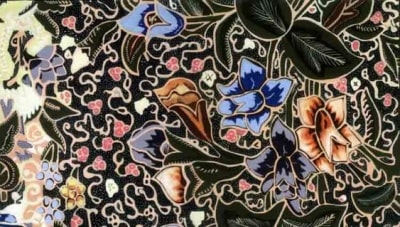
Batik Tujuh Rupa, a vibrant textile art from Pekalongan, Indonesia, truly captures the essence of cultural fusion. This distinctive batik style, therefore, prominently features seven distinct motifs, each deeply symbolic and often depicting natural elements like animals or plants. Its intricate designs, furthermore, beautifully showcase a rich blend of Javanese and Chinese influences, a testament to Pekalongan’s historical role as a bustling trading port. Consequently, the colors are often bold and lively, and the patterns tell stories of harmony and prosperity. Ultimately, collecting Batik Tujuh Rupa isn’t just about owning a beautiful fabric; it’s about embracing a piece of history, artistry, and cross-cultural dialogue.
9. Batik Sogan – The Timeless Elegance of Royal Java
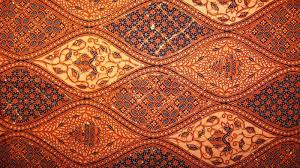
Batik Sogan is a traditional Indonesian batik style deeply rooted in Javanese culture, known for its warm brown base color and rich symbolic meaning. This distinctive shade, derived from natural dyes, represents humility, warmth, dan kebersamaan—core values in Javanese society. Alongside the signature brown, Batik Sogan often includes four other colors: black, red, white, and green, each carrying deep philosophical significance. Black symbolizes resilience, red reflects passion, white stands for virtue, and green represents life and growth. These colors not only create visual harmony but also convey cultural values passed down through generations. Whether worn at weddings, ceremonies, or daily events, Batik Sogan brings together tradition and modernity in every elegant design.
10. Gentongan – A Unique Coastal Charm from Madura
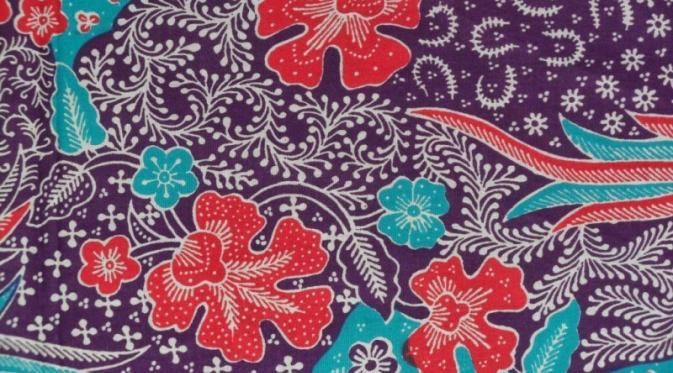
Batik Gentongan comes from the island of Madura, East Java, and it proudly reflects the island’s bold spirit. Artisans create this unique batik by soaking fabrics in large clay jars, called gentong, during the dyeing process—hence the name. This traditional method allows the vibrant colors, especially deep reds and purples, to shine beautifully. Each pattern feels expressive, often filled with floral and nature-inspired motifs that carry deep cultural meanings. While it may take months to complete a single piece, the result is a handcrafted masterpiece full of heritage, care, and personality. No wonder collectors and cultural enthusiasts cherish Gentongan batik for its rarity and charm.
11. Keraton – Indonesian Batik with Noble Patterns Rooted in Royal Traditions
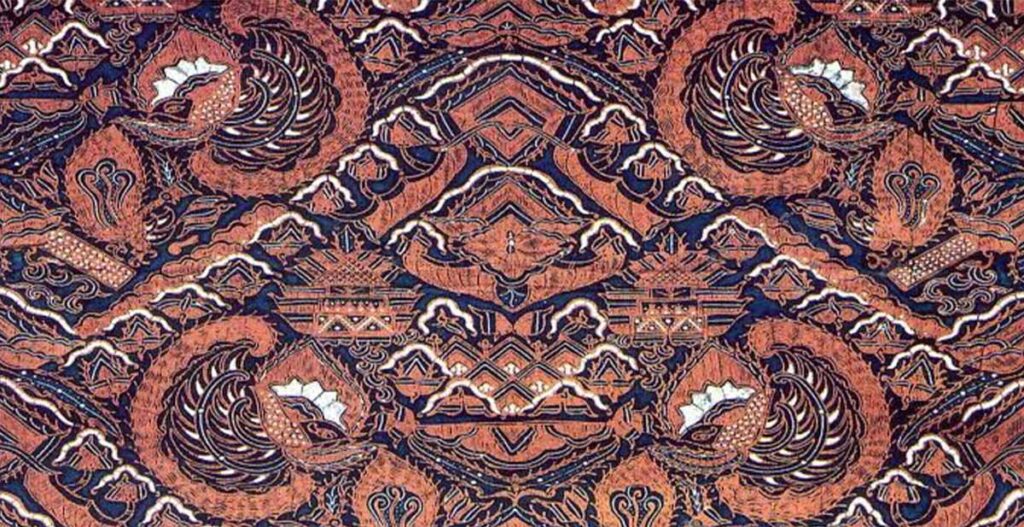
Batik Keraton originates from the royal courts of Java, especially in Yogyakarta and Surakarta. Historically, only members of the royal family could wear these elegant motifs, which symbolize power, wisdom, and moral values. Each pattern—such as parang, kawung, and lereng—tells a story of harmony and leadership, passed down through generations. Crafted with refined techniques and deep philosophy, this batik style often features earthy tones like brown, indigo, and cream. Even today, Batik Keraton is worn during formal ceremonies and cultural rituals, preserving its noble essence.
12. Pring Sedapur – Indonesian Batik Bamboo Motif with a Message of Togetherness
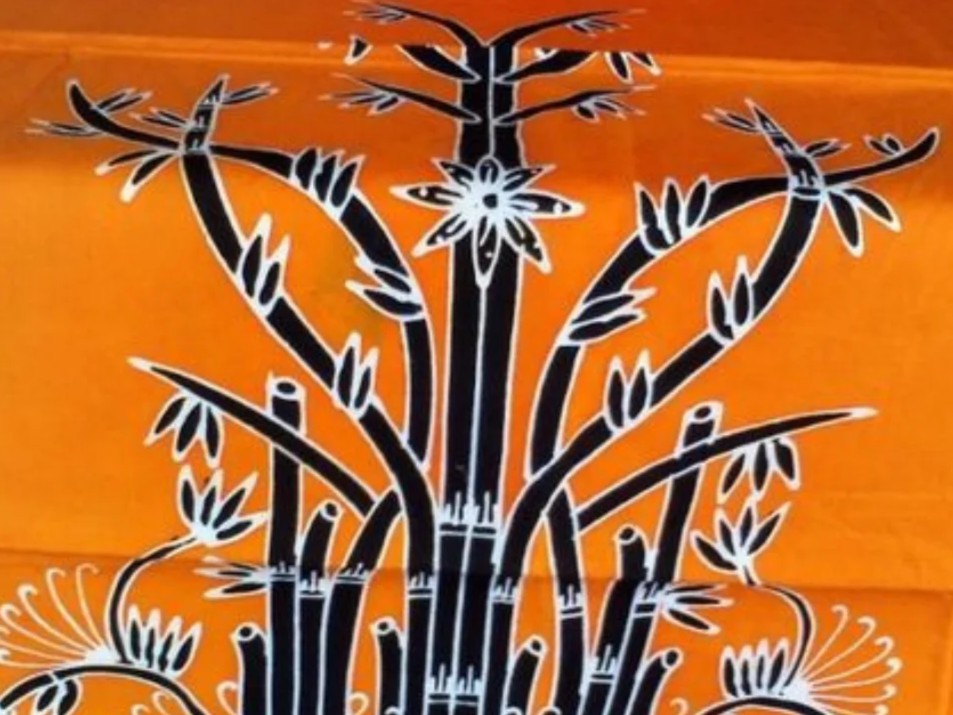
Batik Pring Sedapur, a truly captivating textile art from Magetan, East Java, beautifully depicts natural serenity. This distinctive batik style, therefore, prominently features the bamboo motif (pring), symbolizing peace, harmony, and resilience. Furthermore, the delicate arrangement of bamboo stalks and leaves often creates a sense of tranquil elegance. Dyers traditionally craft these intricate patterns with meticulous attention, reflecting deep respect for nature and life’s simple beauty.
13. Simbut – The Silent Forest Language of Banten

Batik Simbut, a fascinating textile art, definitively originates from Banten, Indonesia. This distinct batik style, therefore, often showcases a dominant motif resembling talo leaves (daun talas), symbolizing simplicity, harmony, and a strong connection to nature. Its origins trace back to the indigenous Baduy tribe, whose deep respect for their environment inspires the patterns. While traditionally characterized by a more simplistic design and natural, often earthy, color palettes, Batik Simbut has evolved, incorporating brighter hues while retaining its core essence of understated beauty and profound cultural significance.
14. Priyangan – A Subtle Fusion of Sundanese Grace and Earthy Warmth
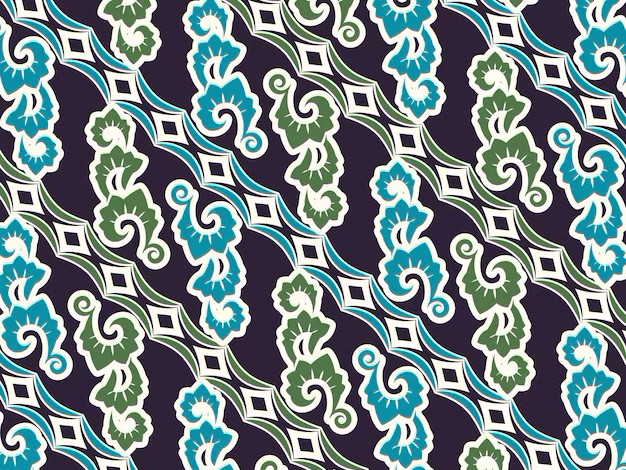
Batik Priyangan, hailing from the Priangan region of West Java and Banten, truly reflects the serene beauty of its natural surroundings. This elegant batik style, therefore, often features intricate patterns inspired by flora and fauna, such as blooming flowers, graceful butterflies, or lush foliage. Its designs, furthermore, beautifully convey a sense of simplicity, openness, and harmony, embodying the character of Sundanese society. The colors are typically softer yet still vibrant, often showcasing delicate details within their dense arrangements.
15. Geblek Renteng – A Contemporary Icon of Kulon Progo’s Local Identity
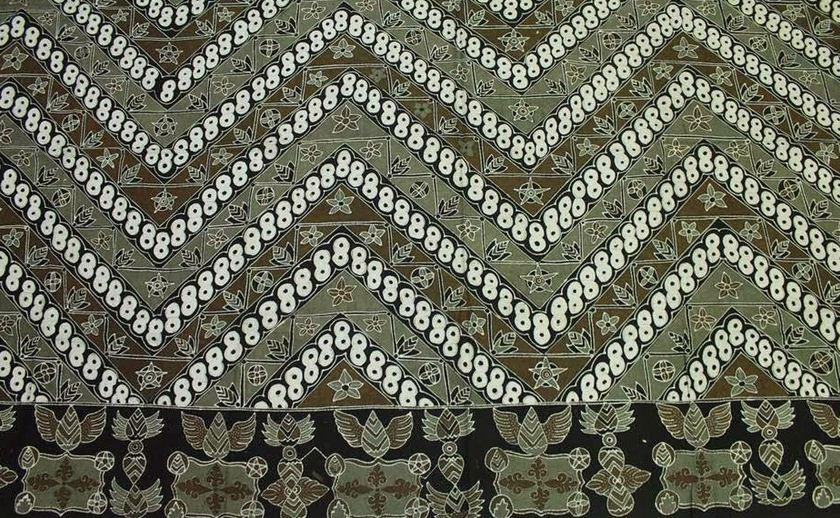
Batik Geblek Renteng, a truly contemporary icon, powerfully symbolizes Kulon Progo’s unique local identity. This distinctive batik emerged from a design competition in 2012, explicitly created to represent the regency. Its central motif, therefore, directly references geblek, a traditional Kulon Progo snack made from cassava, which often forms a figure-eight shape. The “renteng” aspect suggests a connected, continuous chain, symbolizing unity, cooperation, and the strong community spirit of its people. Furthermore, the batik often incorporates other elements reflecting Kulon Progo’s natural wealth and aspirations for growth, including the Binangun symbol (a blooming flower bud) and local flora and fauna.
Also Read :
Documents Required for Indonesian Batik Export to Global Market
1. Invoice Packing List (IPL)
Every Indonesian batik export must start with a clear and detailed Invoice Packing List. This document lists all the goods being shipped, including product descriptions, quantities, and values. It helps customs officers and logistics partners understand what’s inside the shipment. A well-prepared IPL also speeds up the export process and reduces delays. By keeping this document updated and accurate, exporters ensure smooth transactions across borders. Clearly, it plays a vital role in international trade.
2. Air Waybill (AWB)
When shipping batik by air, an Air Waybill (AWB) is essential. This document acts as a receipt for the consignment and provides key details like sender, receiver, and flight information. The AWB also serves as proof of shipment and helps track goods during transit. Using a digital tracking system makes it easier to monitor shipments in real time. Exporters who manage their AWBs properly can offer buyers more transparency and reliability. With this document, businesses gain control over their logistics and improve customer satisfaction.
3. Bill of Lading (B/L)
For sea freight, the Bill of Lading is a must-have. It works as a contract of carriage, a receipt, and a document of title all in one. This means it proves ownership and guarantees delivery of the batik products at the destination port. Exporters should always ensure the B/L matches the invoice and other paperwork to avoid confusion or disputes. Having a clean and complete B/L builds trust with international buyers and freight companies. It’s not just a formality—it’s a foundation for secure global trade.
4. Insurance Policy
Securing an Insurance Policy protects both the exporter and the buyer from unexpected losses during transport. Whether by air or sea, accidents, delays, or damage can happen. An insurance plan covers these risks, ensuring financial protection and peace of mind. It also boosts buyer confidence, especially when shipping high-value batik collections overseas. Exporters who include this step show professionalism and care for their clients’ investments. In today’s competitive market, offering insured shipments gives you a strong edge. It’s a small cost that can prevent big problems later on.
It’s Time the World Knows Your Indonesian Batik Masterpieces – Export hassle-free with AsiaCommerce’s reliable support and guidance.
Let the world finally experience the beauty of your Indonesian batik masterpieces—with AsiaCommerce, exporting becomes seamless. This trusted partner offers expert support, tailored guidance, and practical solutions to simplify every step of your export journey. Whether you’re just starting out or expanding to new markets, their services help you handle customs, documentation, and global shipping with ease. Ready to go global? Make it happen effortlessly with AsiaCommerce by your side.

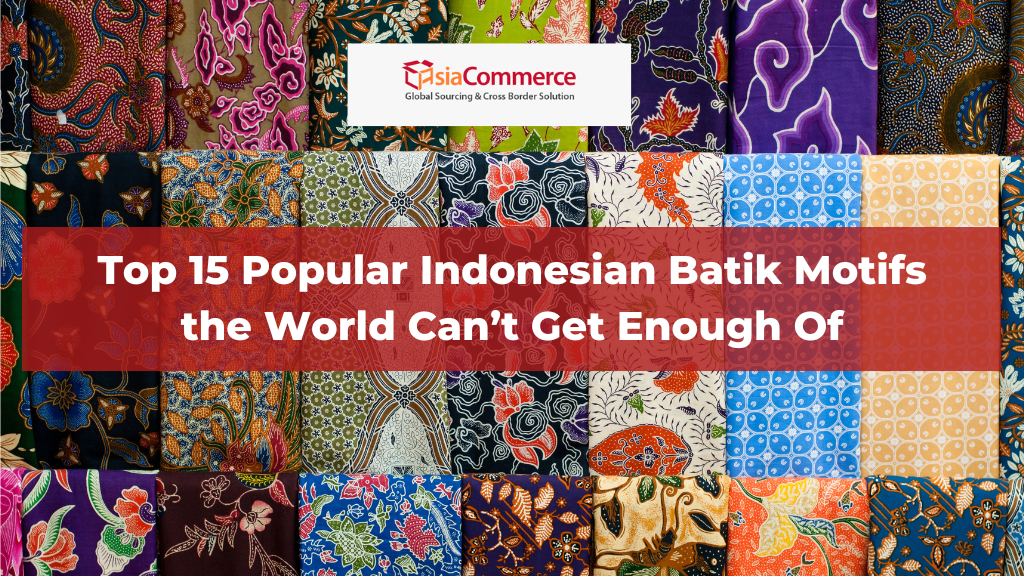
0 Comments